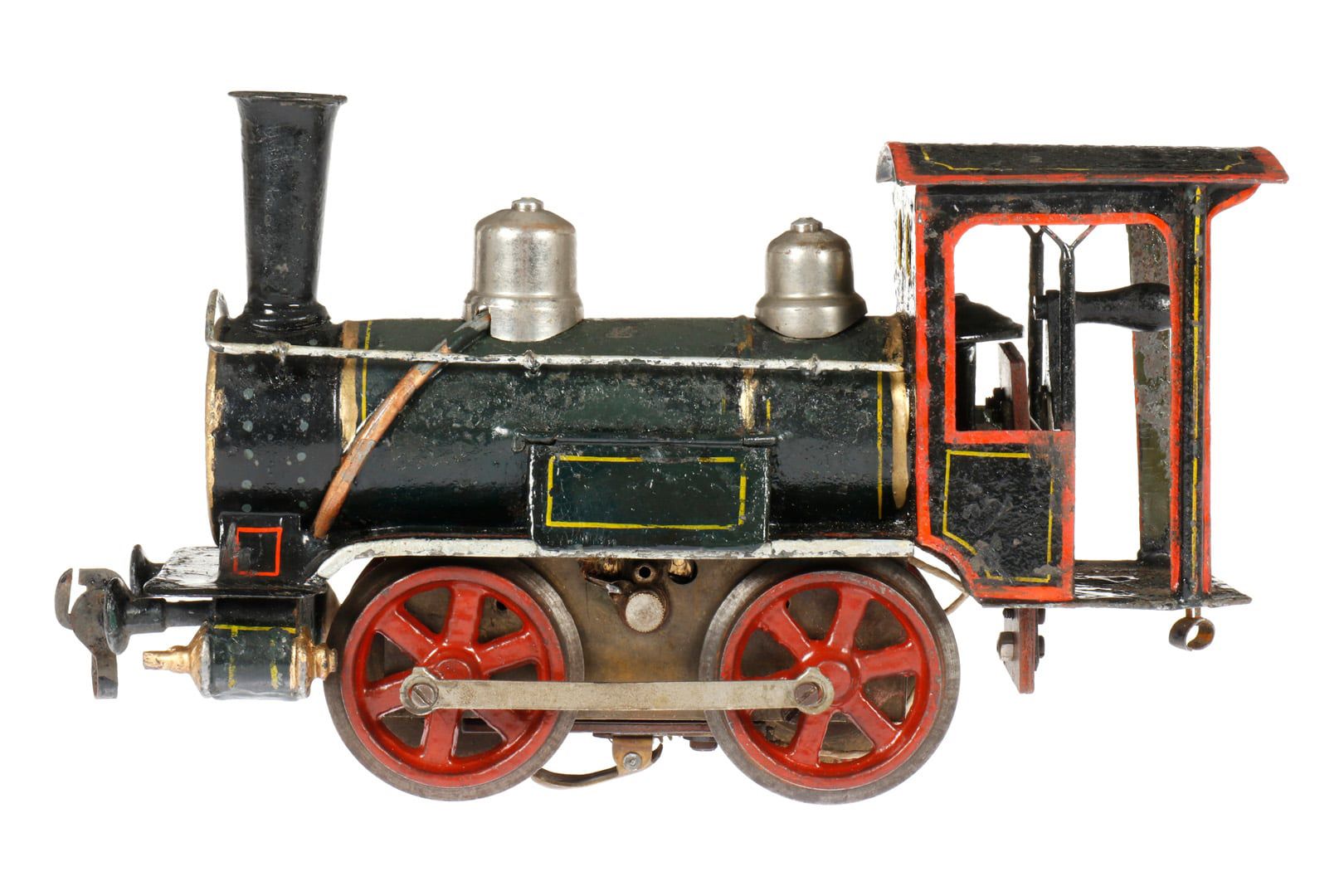Origins of Electric: The F/E 3021 Märklin’s Electric Masterpiece

In the rich world of Märklin trains, few pieces inspire as much intrigue as the FE 3021 – in both its clockwork and electric counterparts as well as the similar E 3021. The E 3021 is often referred to by collectors as the “pot-bellied pig” due to its distinctive design, this electric locomotive model has sparked debate over its true introduction date.
Before the (penultimate) turn of the century, in the 1890s, besides a few live steam locos, we saw only clockwork trains, which had the disadvantage of rather poor tractive power and short run duration. Although electricity was in still in its infancy and electric motors were rather large, Marklin decided to construct a more widely product electric powered loco in around 1903-1904. They choose the large enough Gauge II scale and tried to fit the motor in the same chassis as the clockwork motors. It did not really fit, so they had to deal with some “work arounds.” What seems to be an imitated coupling rod between the wheels, in reality is the frame of the motor itself. Besides that they equipped the loco with 2 lids on the side to easily access the electric motor and to oil the axles. They also partially enlarged the steam boiler chassis covering the motor. Below we explore several versions of the E 3021 (Gauge 1) and E 3022 (Gauge 2). Aside from the differences in gauges, one interesting variation has a shorter nose and a special pipe (steam whistle) on the smoke stack. American versions of this locomotive have also been found with cowcatcher, bell, and either German or American-style cabs (with rectangular windows). There is also a very seldom seen variation of this locomotive with an all-brass housing.




Previous earl(ier) electric locomotives


A Tale of Multiple Versions
Back in 1905, Märklin released two versions of the “E” class locomotive: a clockwork version and a steam-powered one. Because of this, some publications have mistakenly assumed that the electric version was also introduced that same year. However, that assumption doesn’t hold up under closer inspection.
The FE 3021 first makes a confirmed appearance in Märklin’s 1907 supplementary catalog, a follow-up to the 1904 main catalog. Found on pages H 136, this catalog was published in the autumn of 1907. Although just an add-on, it presented the complete range of electric high-voltage locomotives, suggesting that these products weren’t necessarily brand new in 1907—they could have originated in 1904, 1905, or 1906.

Was the FE 3021 Older Than We Thought?
Indeed, there’s evidence that the FE 3021 may have been in circulation earlier in 1907, if not before. One document, the 1907 Revised Price List for the illustrated catalogs of 1904, 1905, and 1906, already lists the FE 3021—replacing the older E 3021 and referencing catalog page H 48. This strongly implies that the electric version had begun to phase out the earlier model by spring 1907.
So while 1907 remains the commonly accepted year of introduction, it’s entirely possible that the FE 3021 debuted slightly earlier. For now, 1907 stands as the best-documented date.
The Evolution of Features
Interestingly, the 1907 supplementary catalog doesn’t mention electric lighting for the FE 3021—or even its alternating current counterpart, the FE 3021 W. That changes in the 1909 main catalog, where a new variant appears: the FE 3021 EB. The “EB” suffix denotes the addition of electric lighting, and the accompanying catalog image was updated to include the iconic rays emanating from the two lower headlights—a design that would become legendary among collectors.
The End of the Line
What we do know for certain is the final year this model was offered. The 1913 general price list includes the FE 3021 EB, but by the 1914 seasonal catalog, it had vanished. That marks 1913 as the last confirmed year this beloved locomotive was available for sale.
In Summary:
- 1905: Clockwork and steam versions released—no electric version yet.
- Spring 1907: FE 3021 shows up in revised price list, replacing E 3021.
- Autumn 1907: Officially listed in the supplementary catalog.
- 1909: FE 3021 EB debuts with electric lighting and new design.
- 1913: Last known year of availability.
- 1914: Gone from the catalog.
Whether you’re a historian, a collector, or just a fan of Märklin’s golden age, the FE 3021 remains a captivating piece of toy train history—one that still sparks curiosity more than a century later.


Extremely well written and informative. Thank you!
Once again, dear Paul, you’re given’ us many superb informations about Märklin. I suppose you have heard about my fiend, in Belgium, Frans Bevers. He passed away and I wonder what will happen with his extraordinary collection. Have you seen my book about the Bevers collection ?
All the best